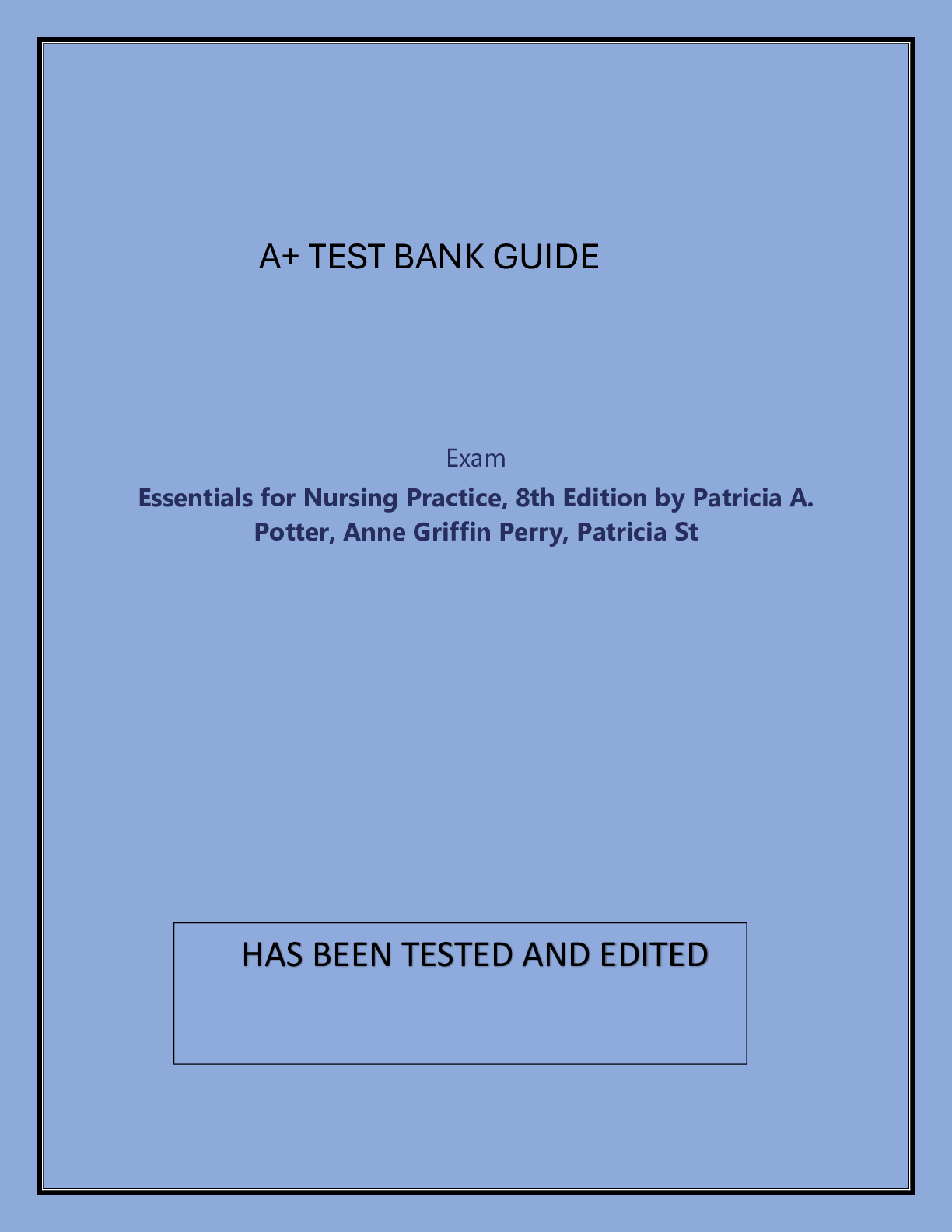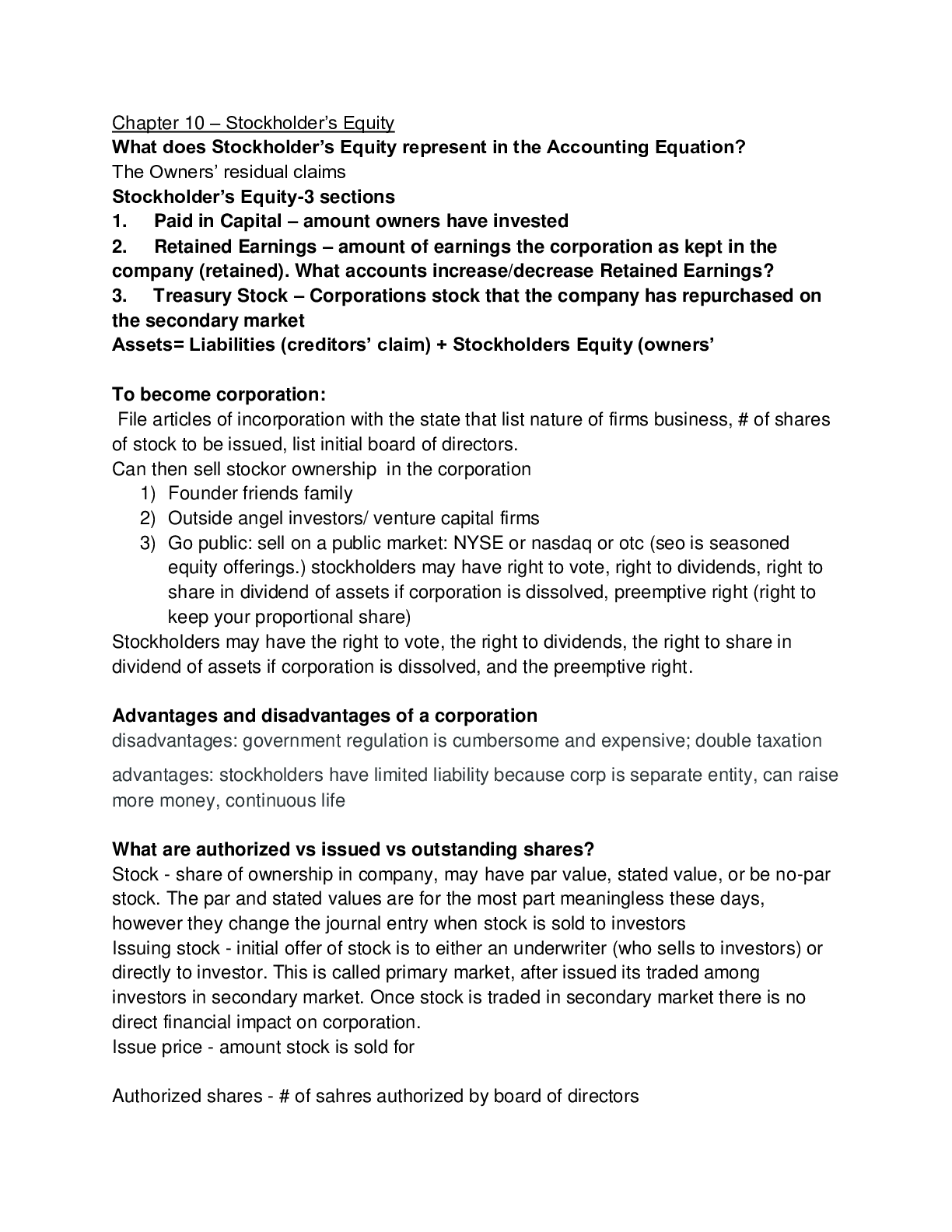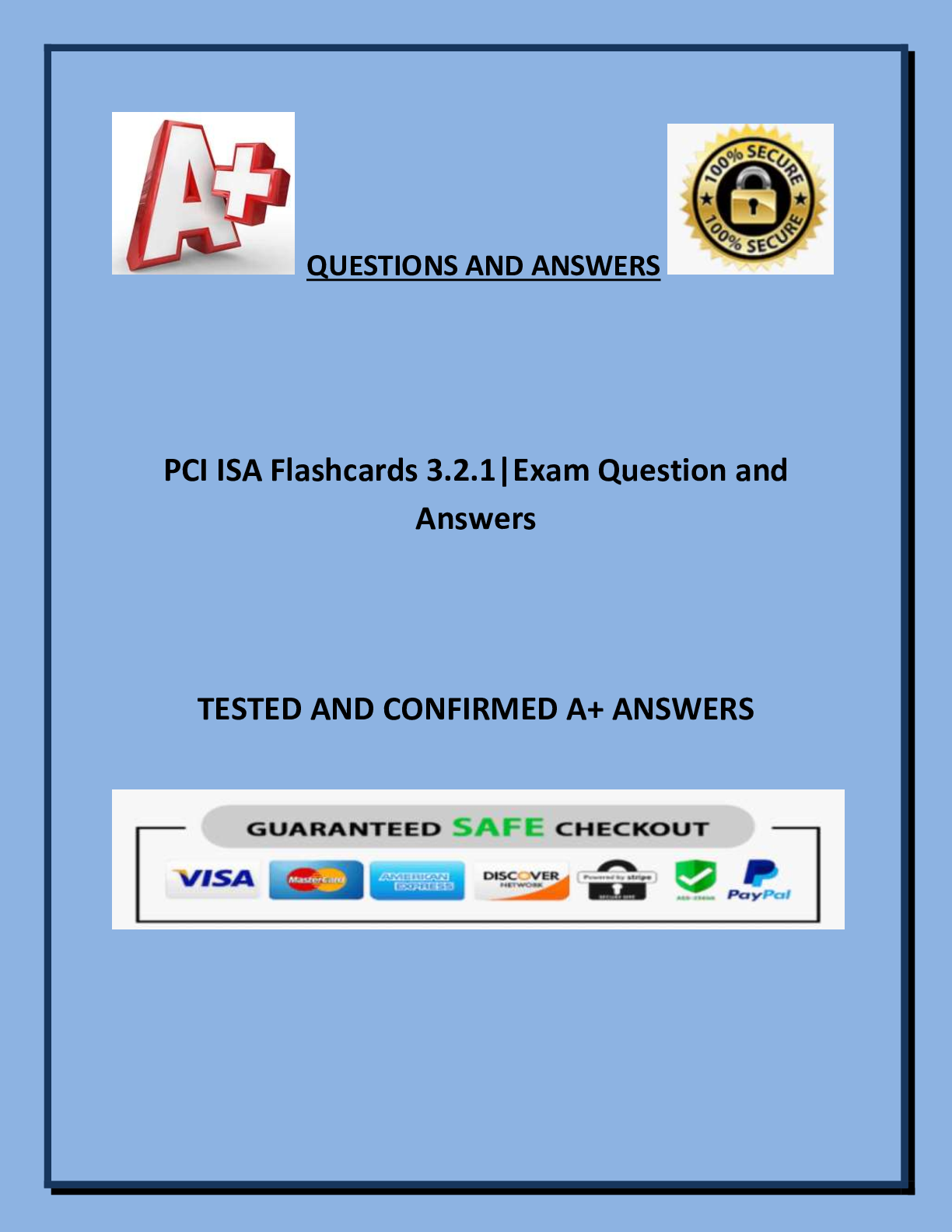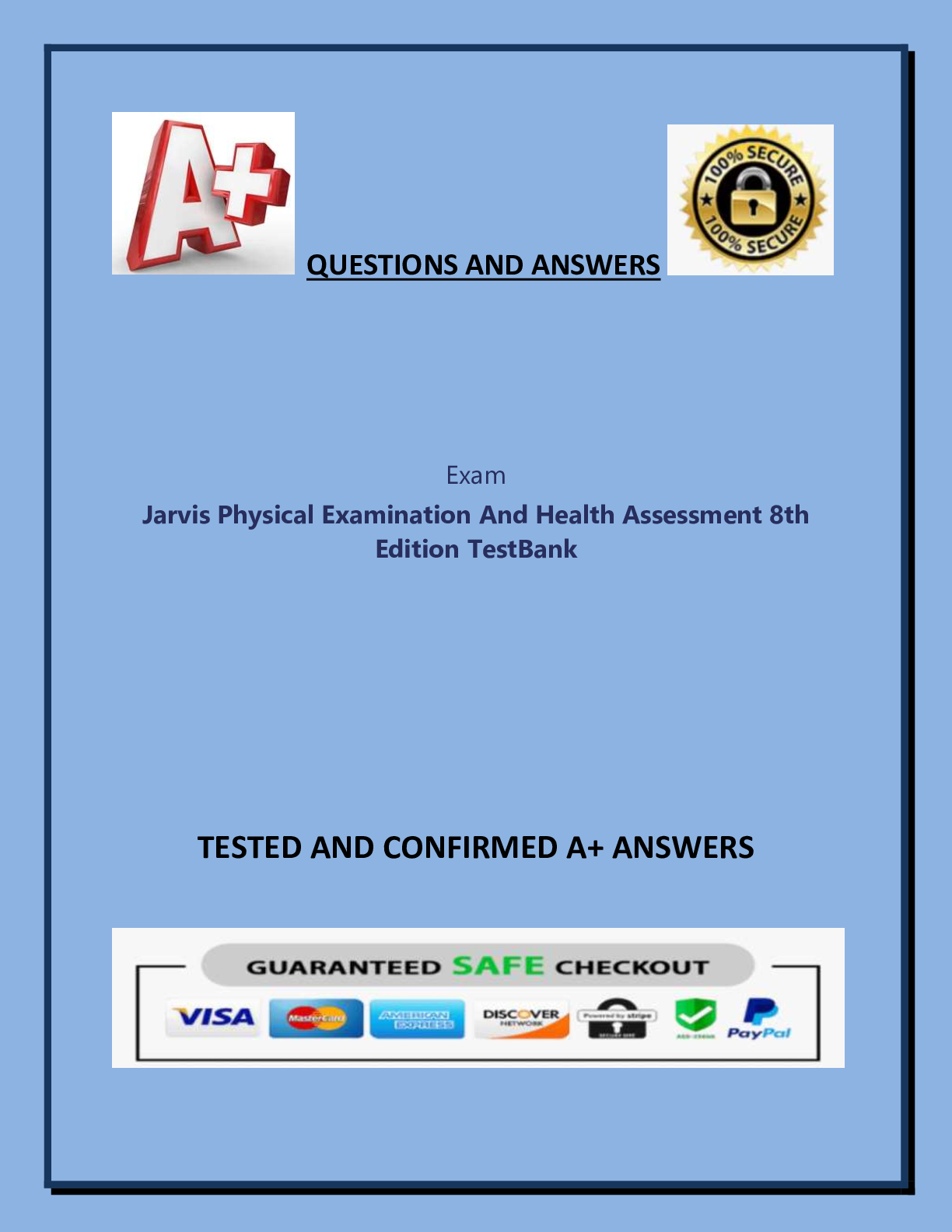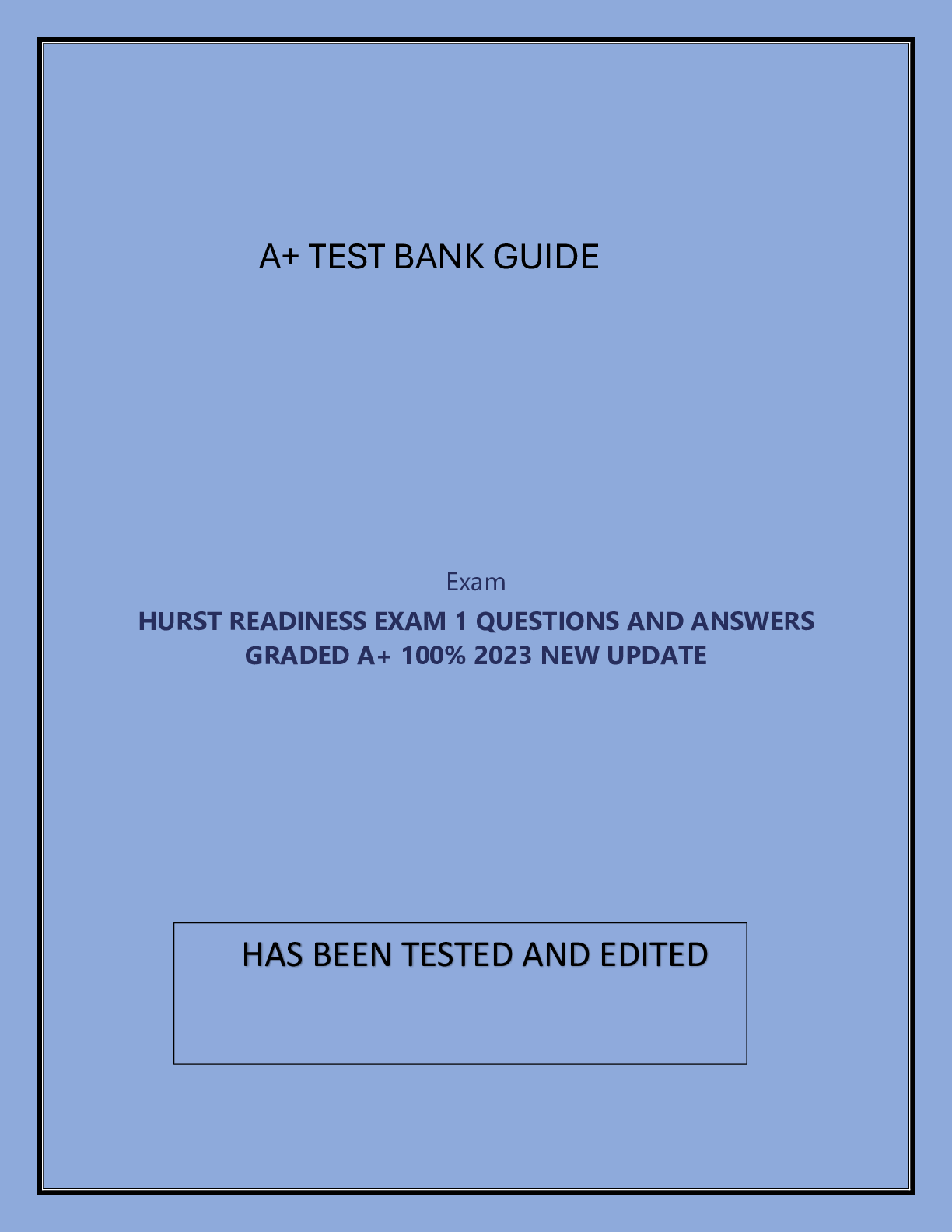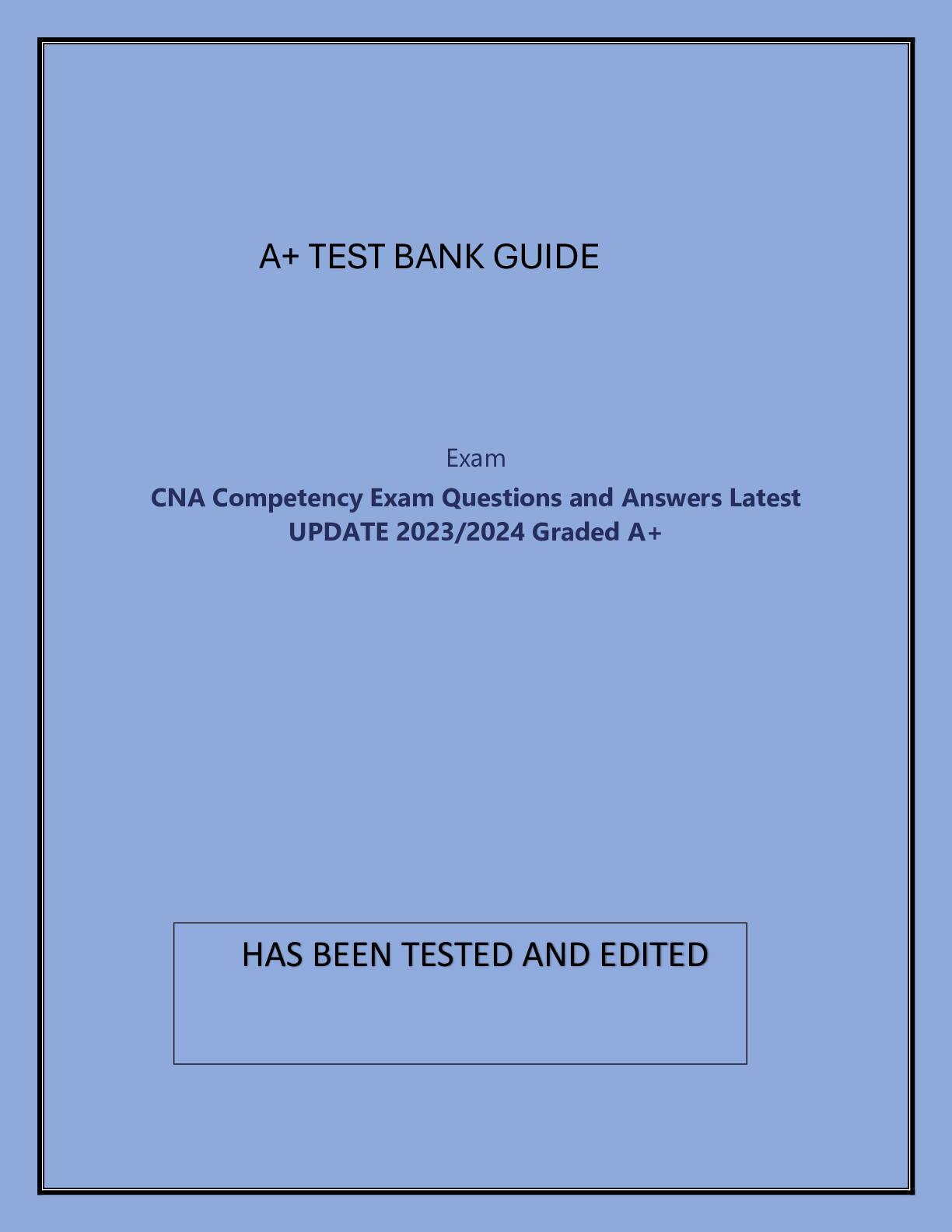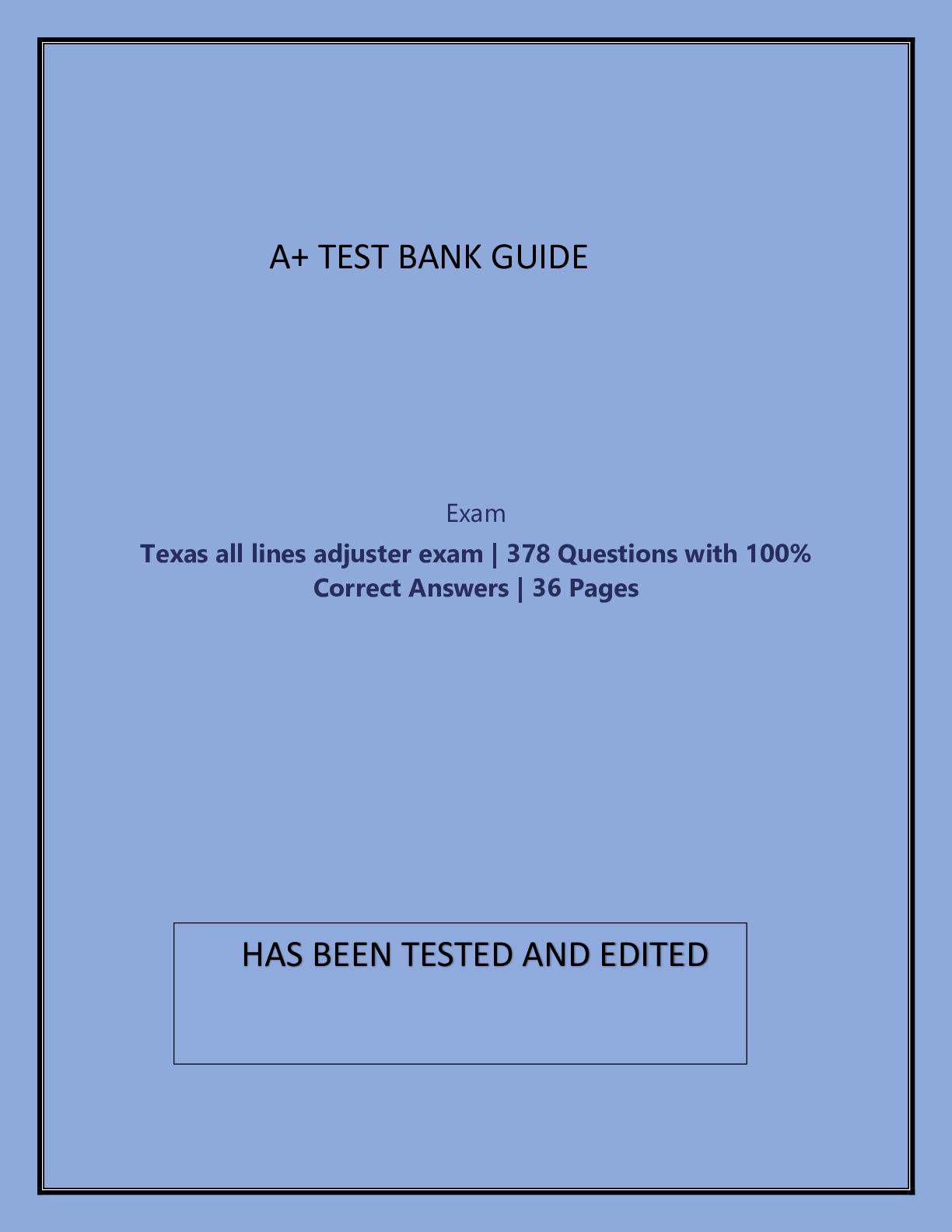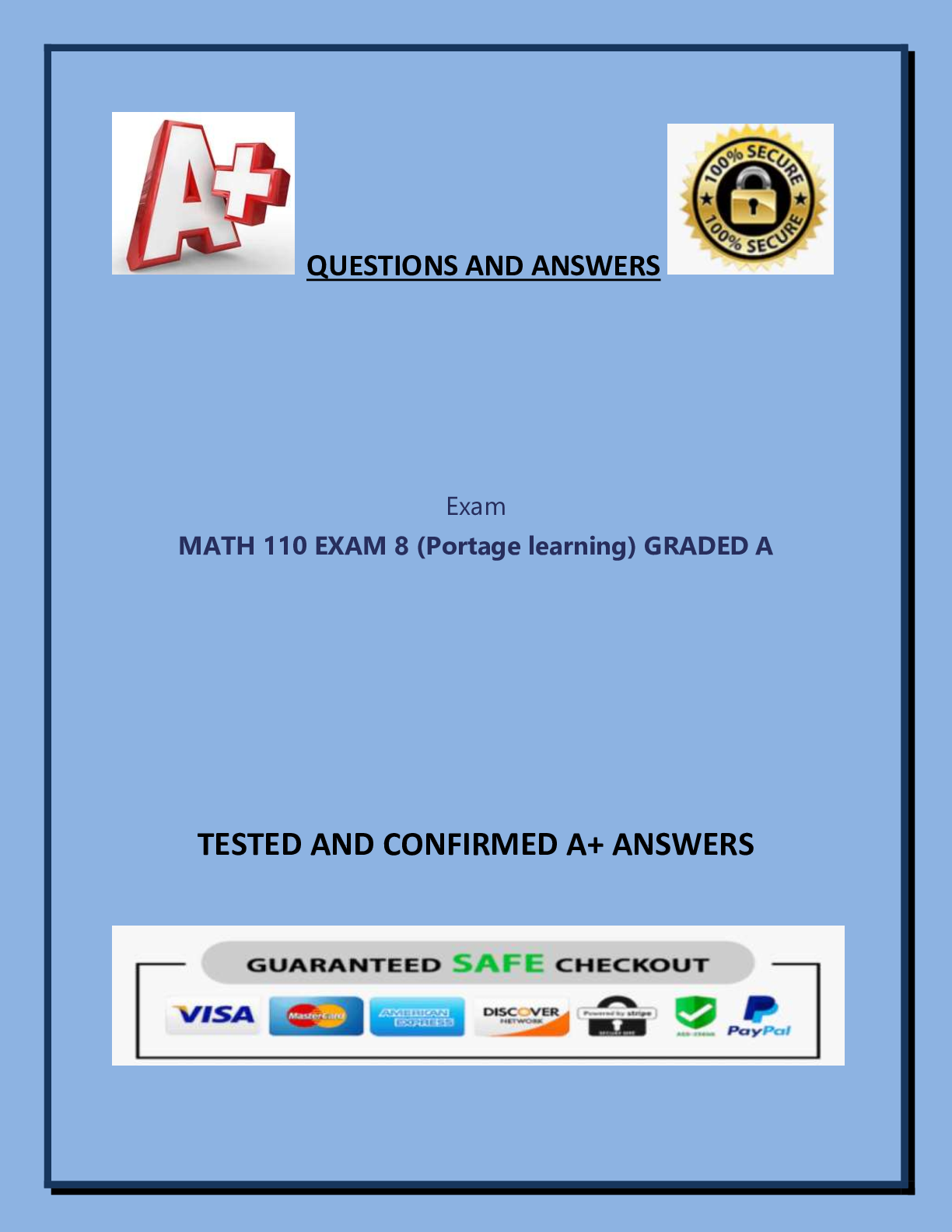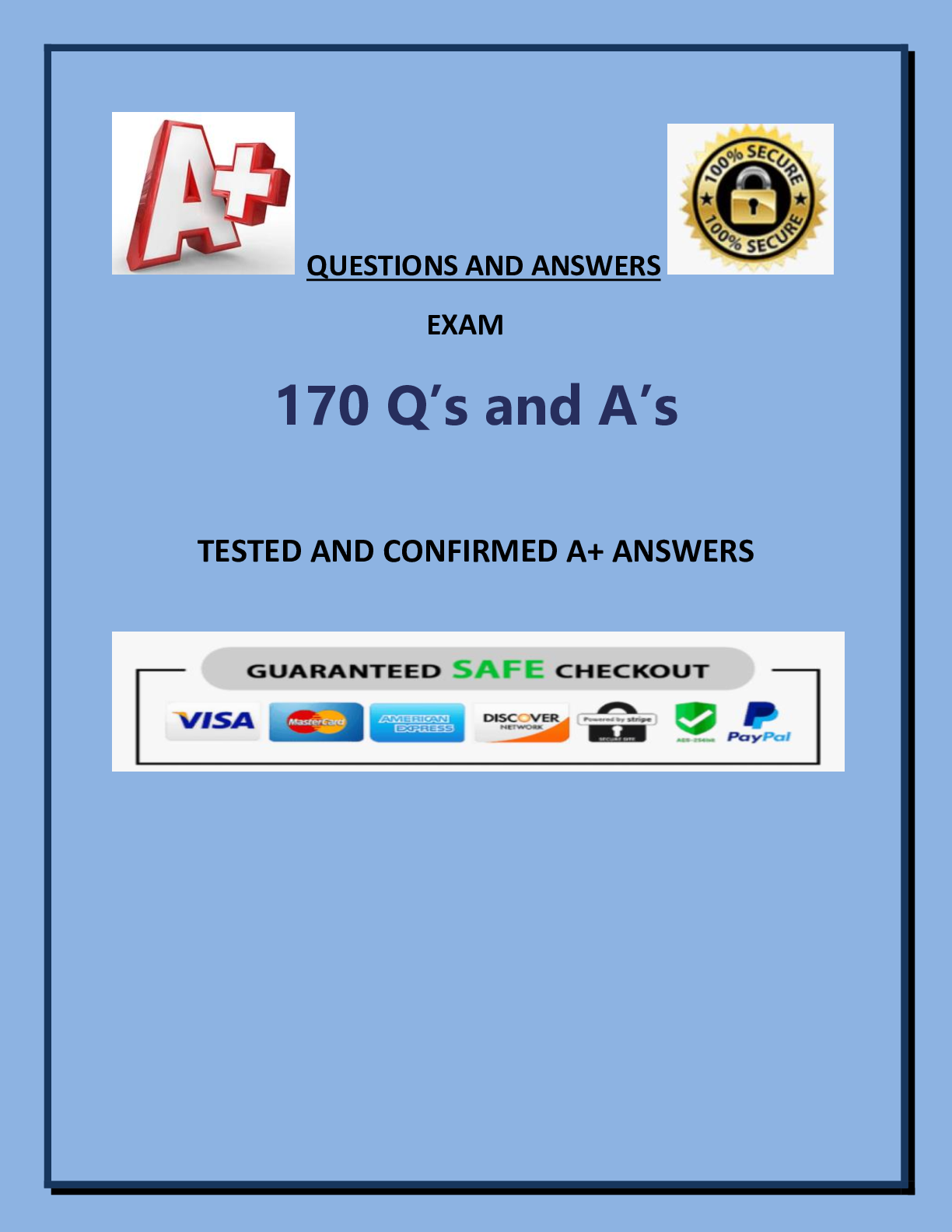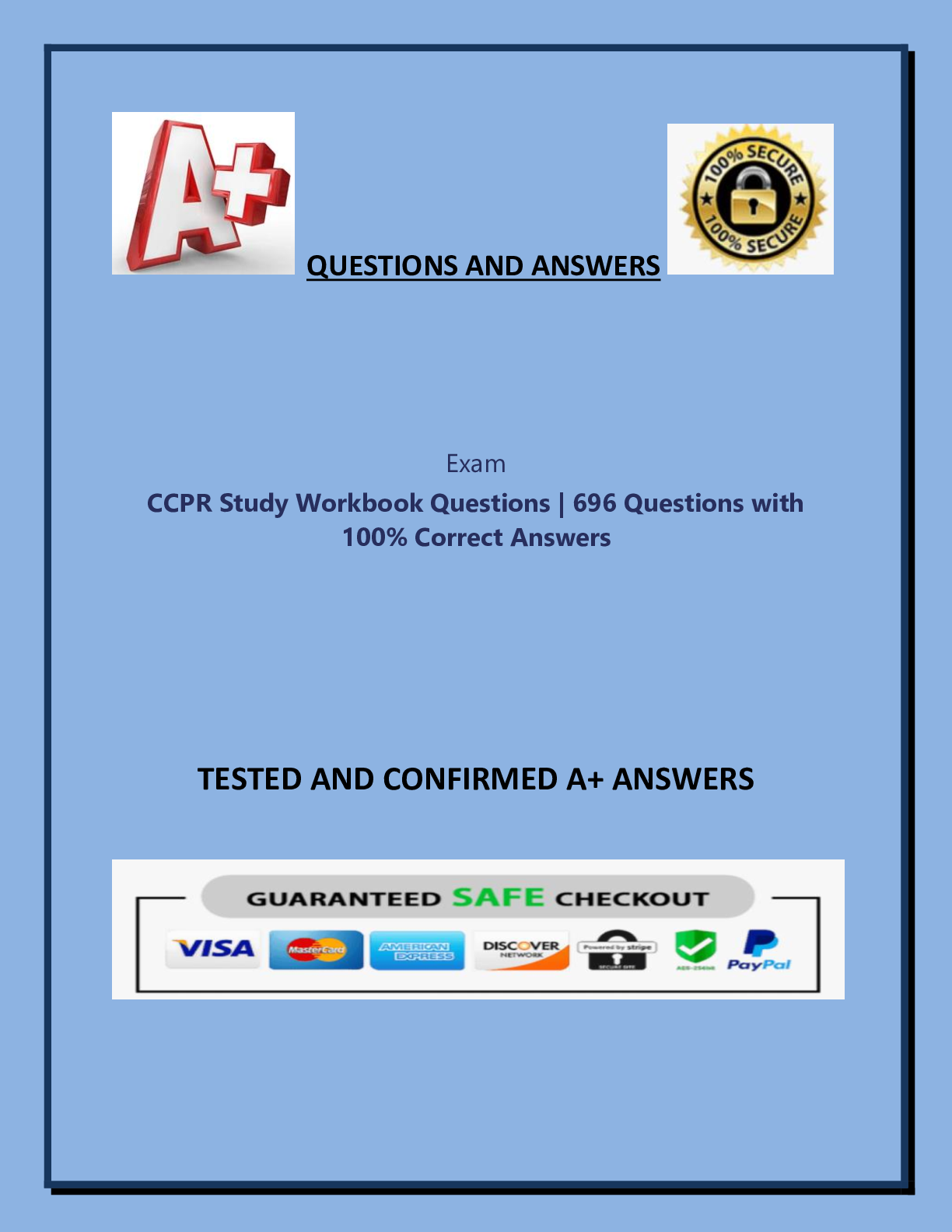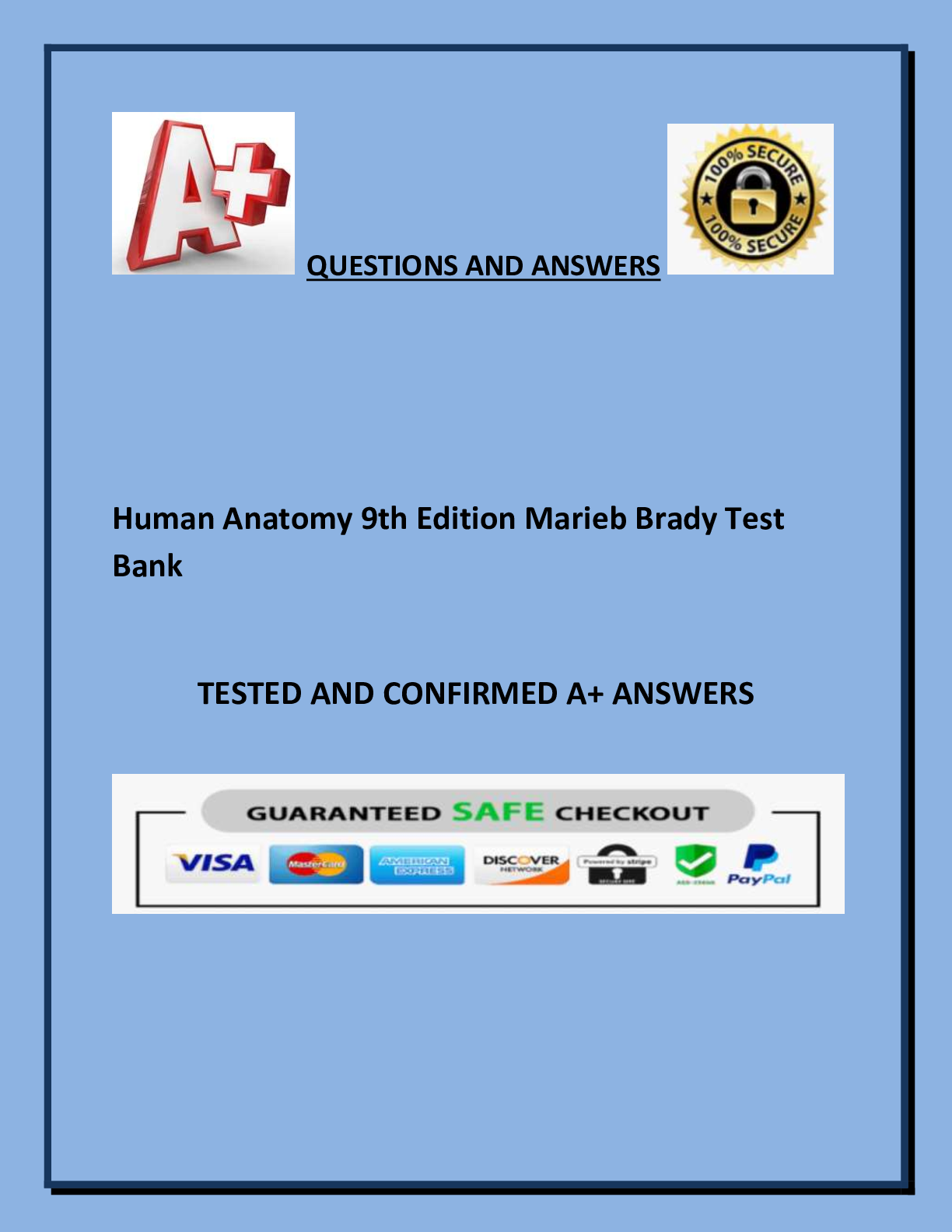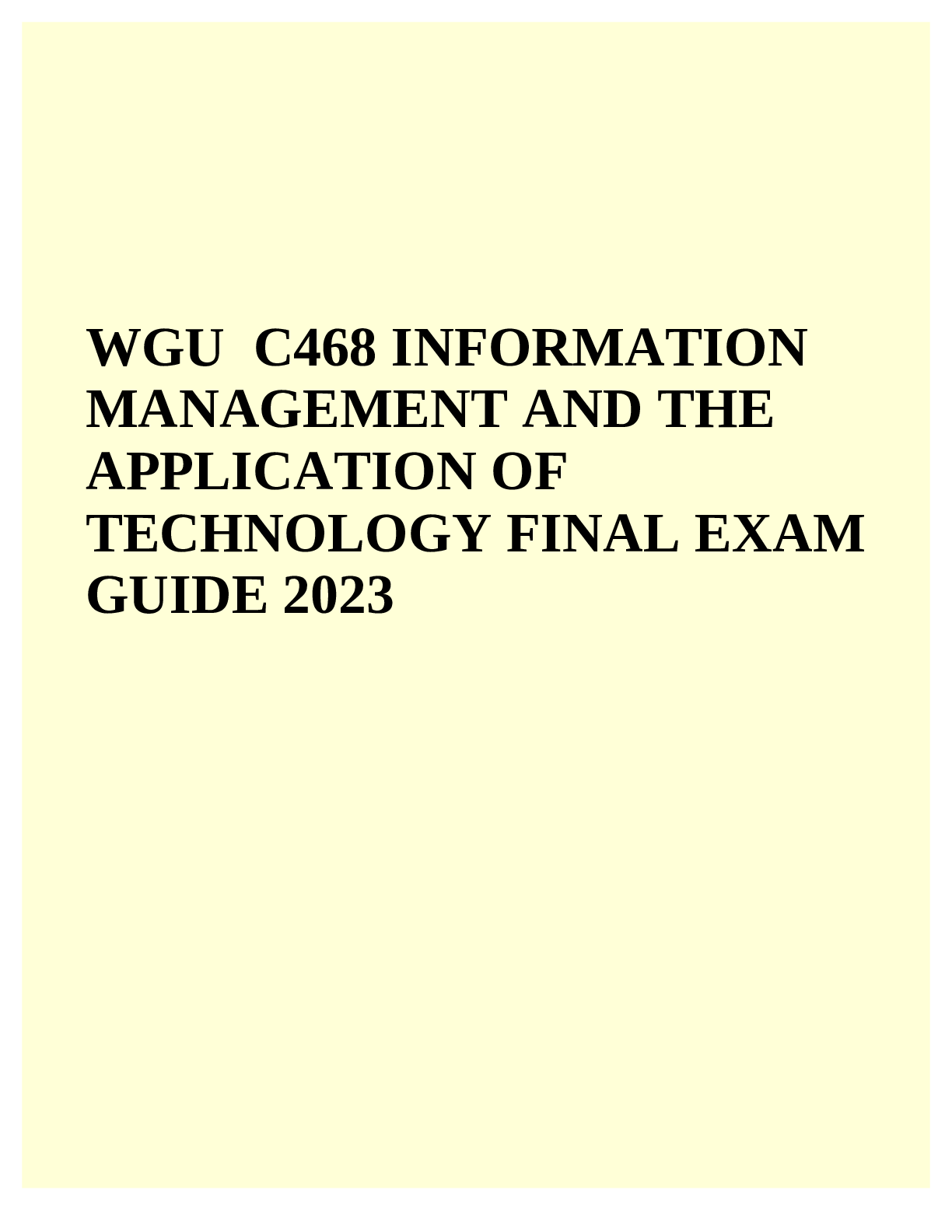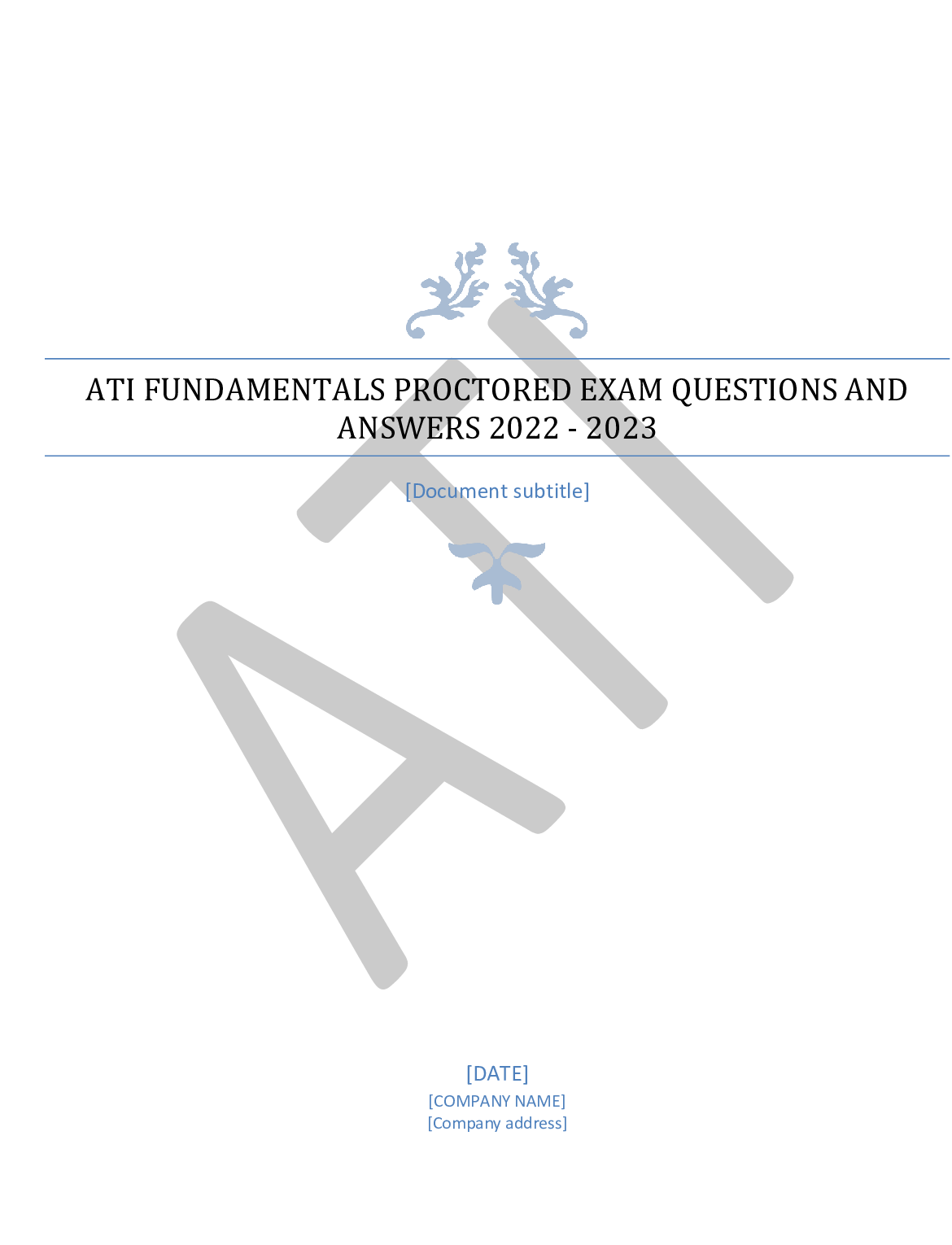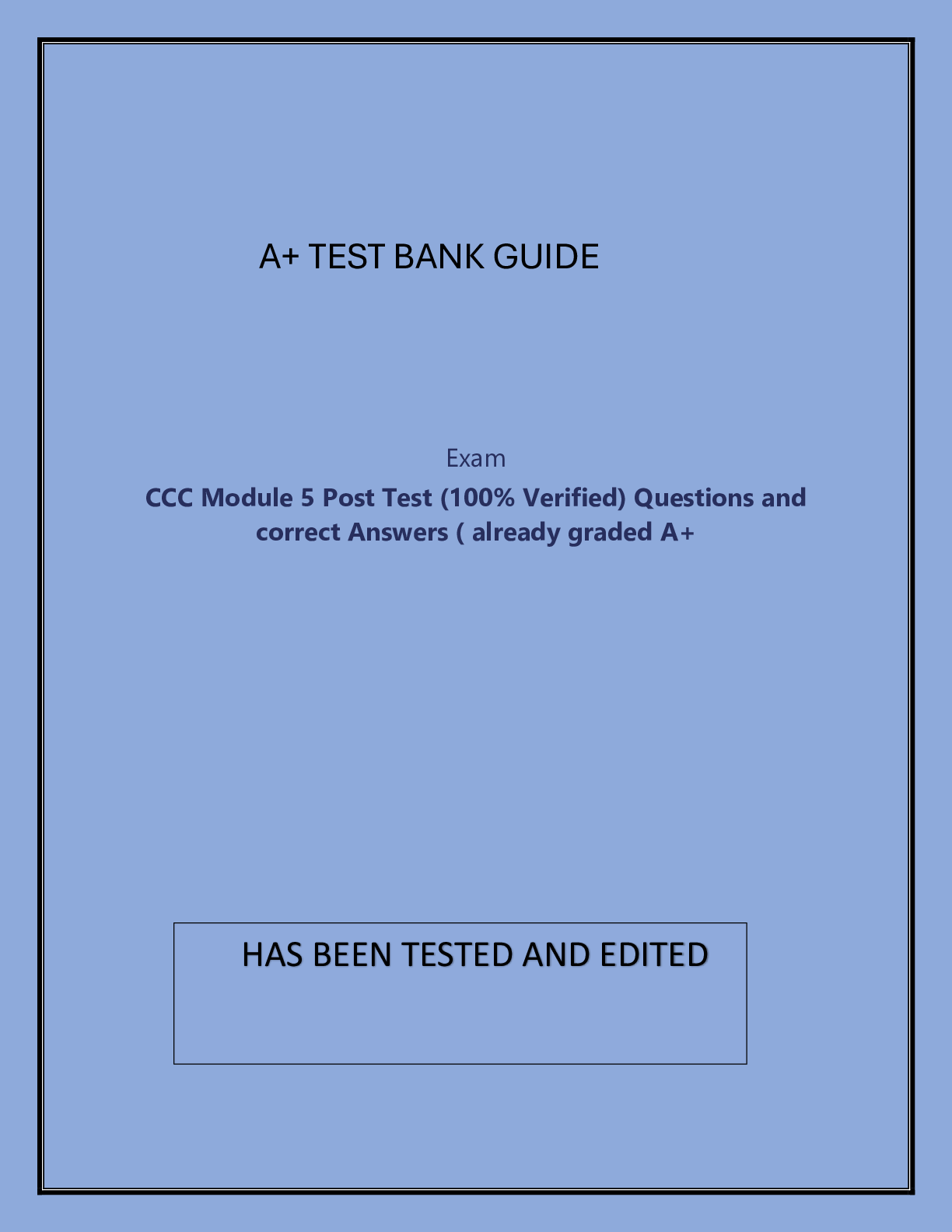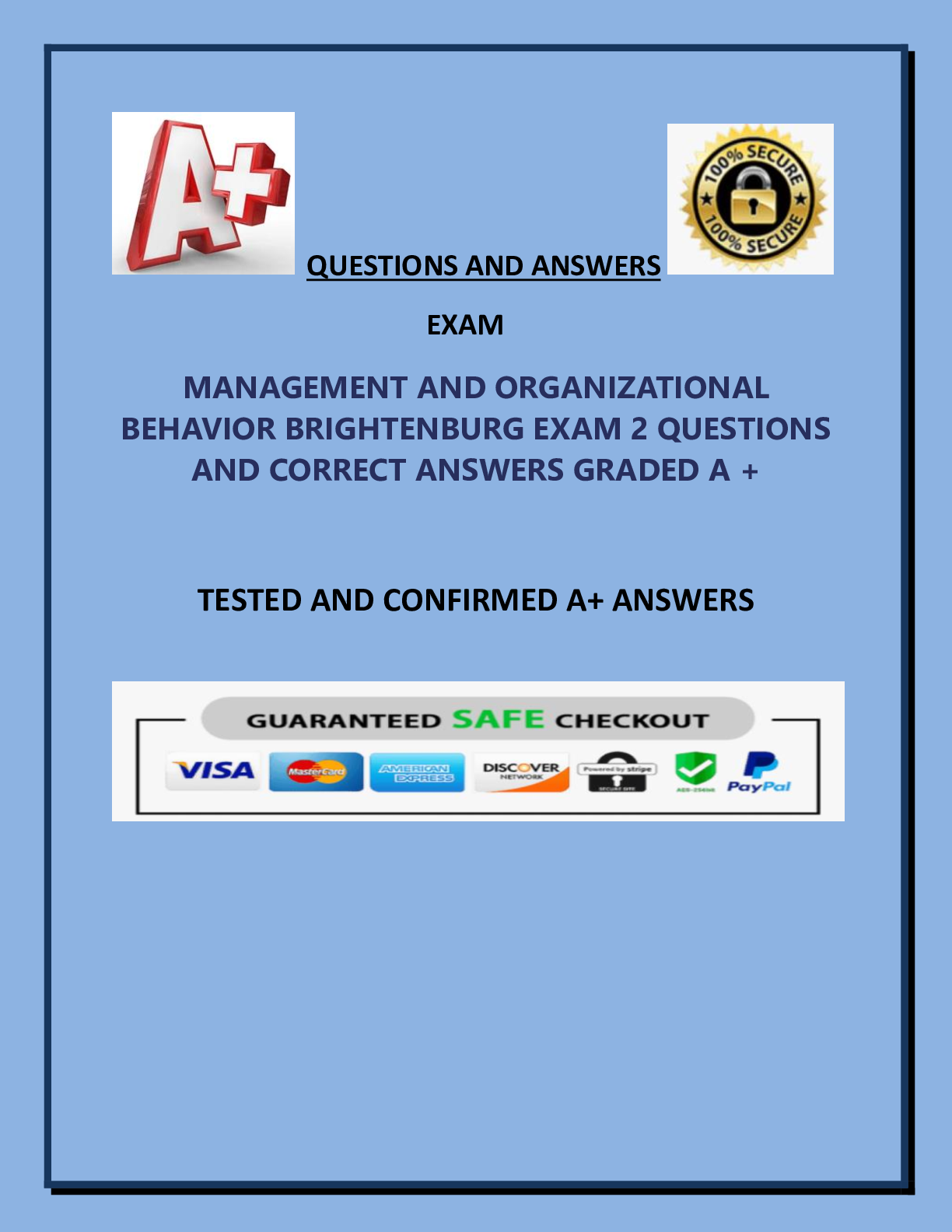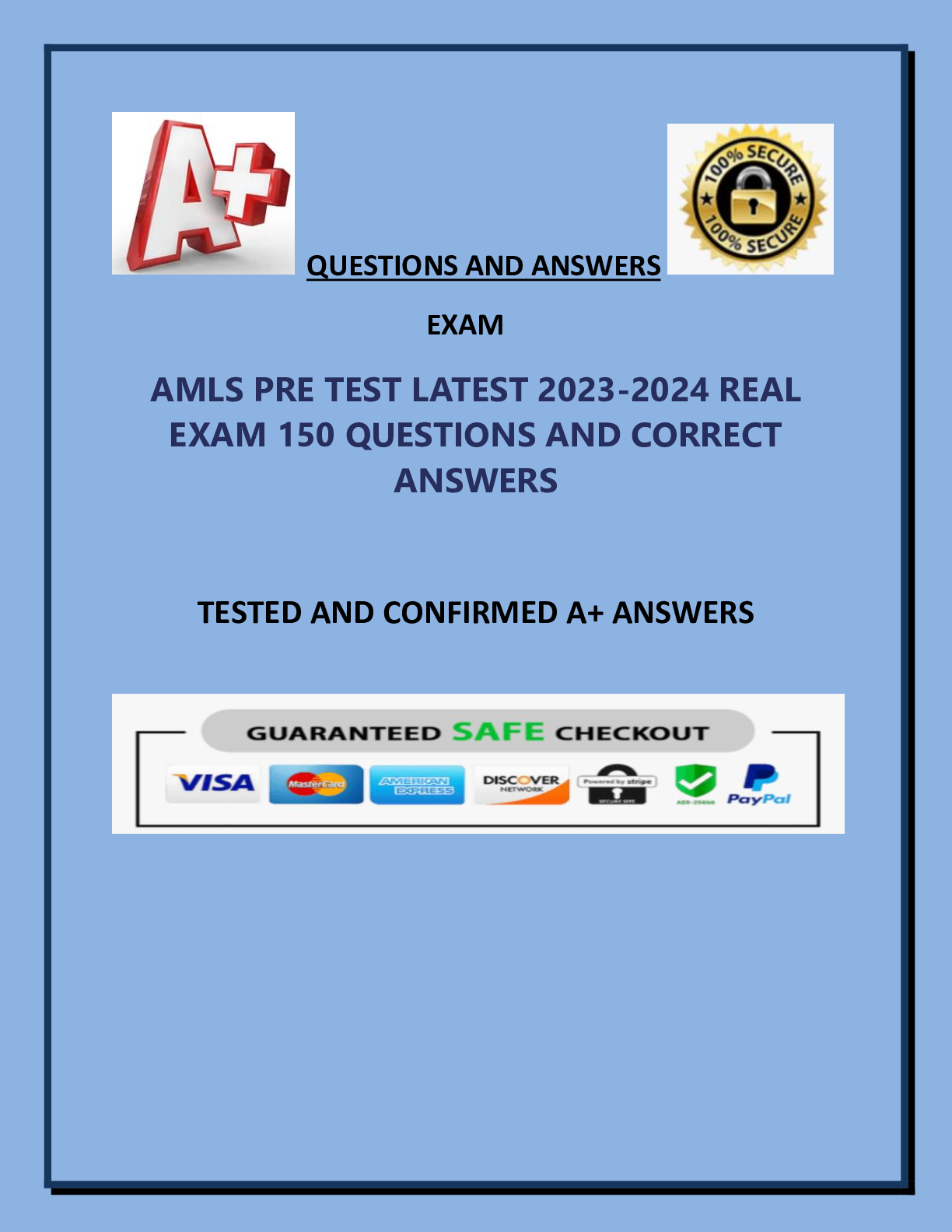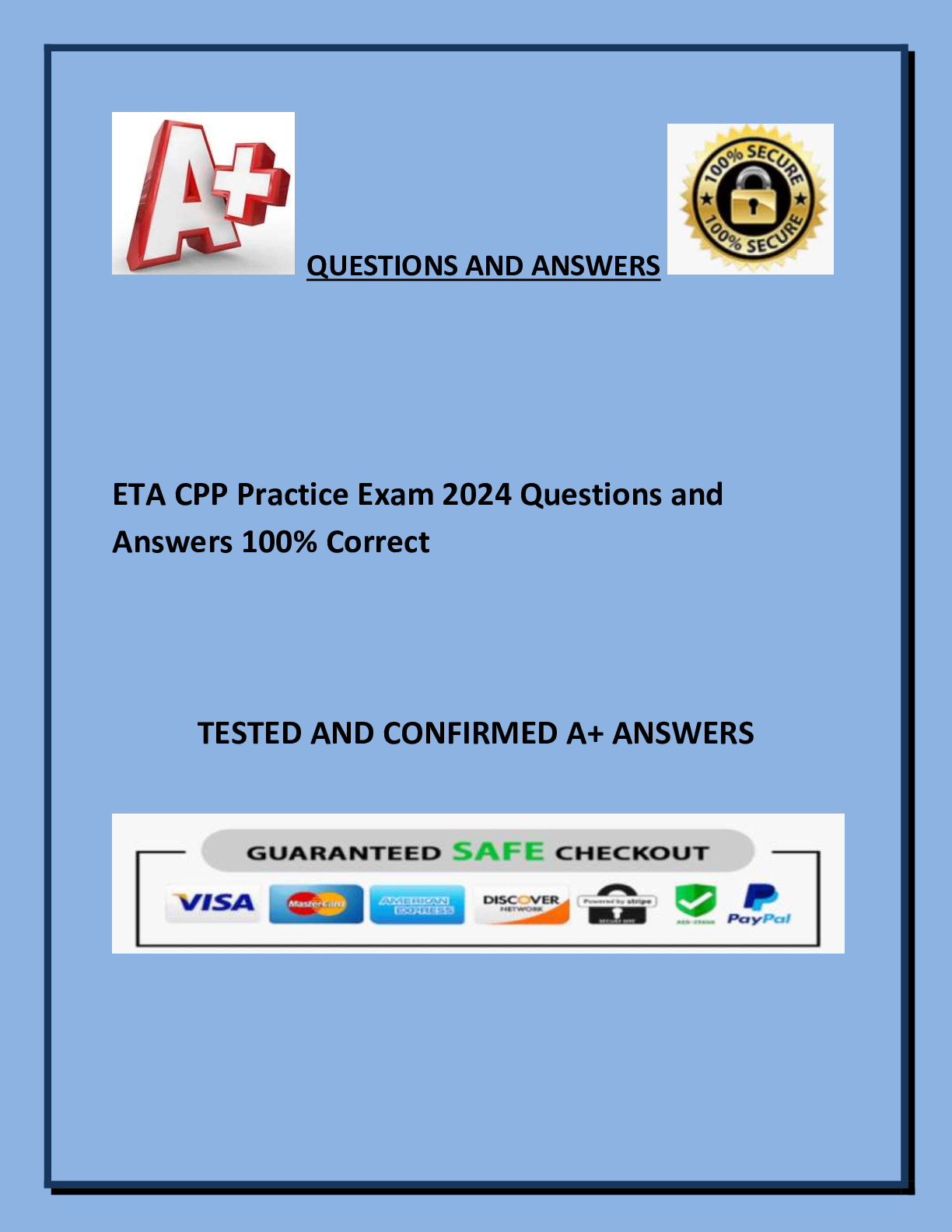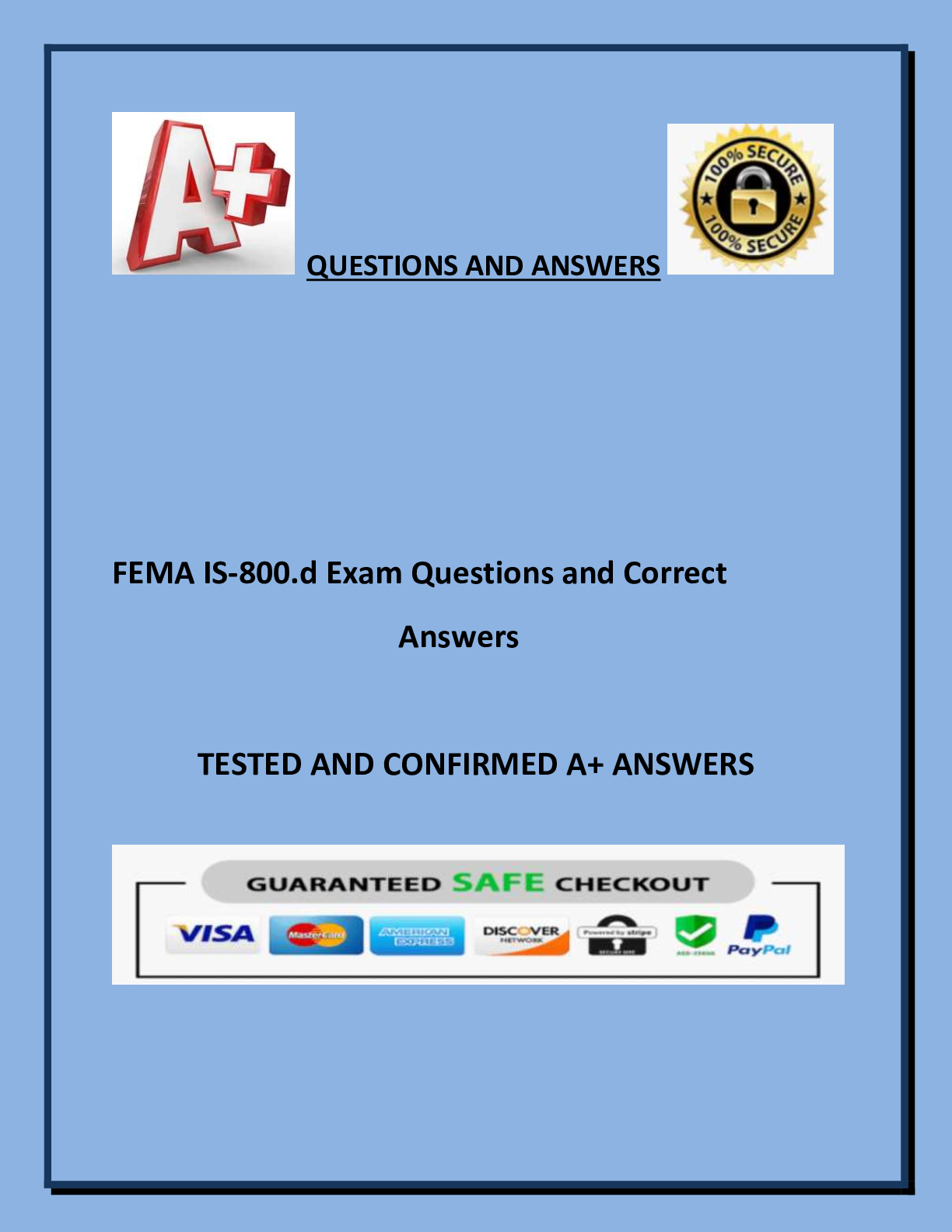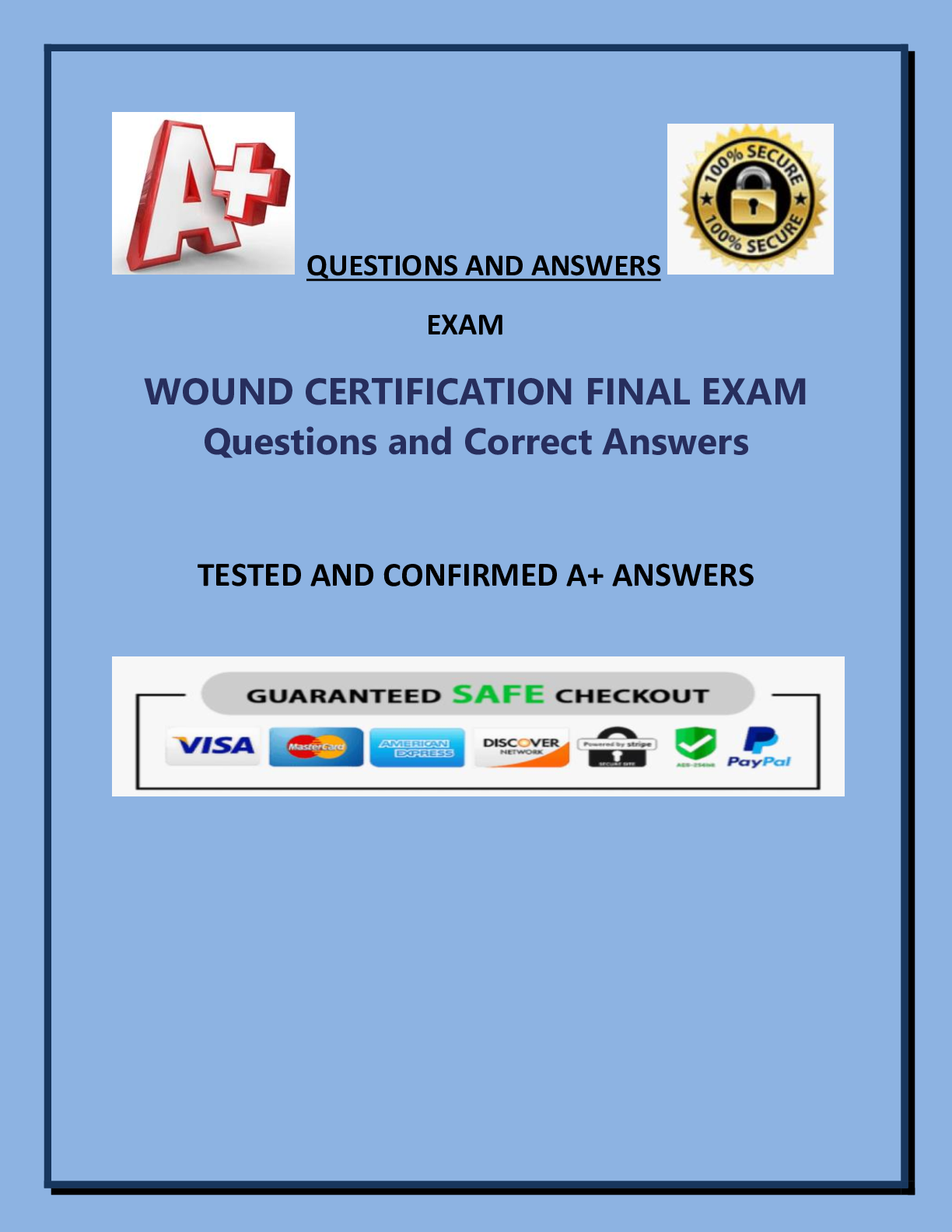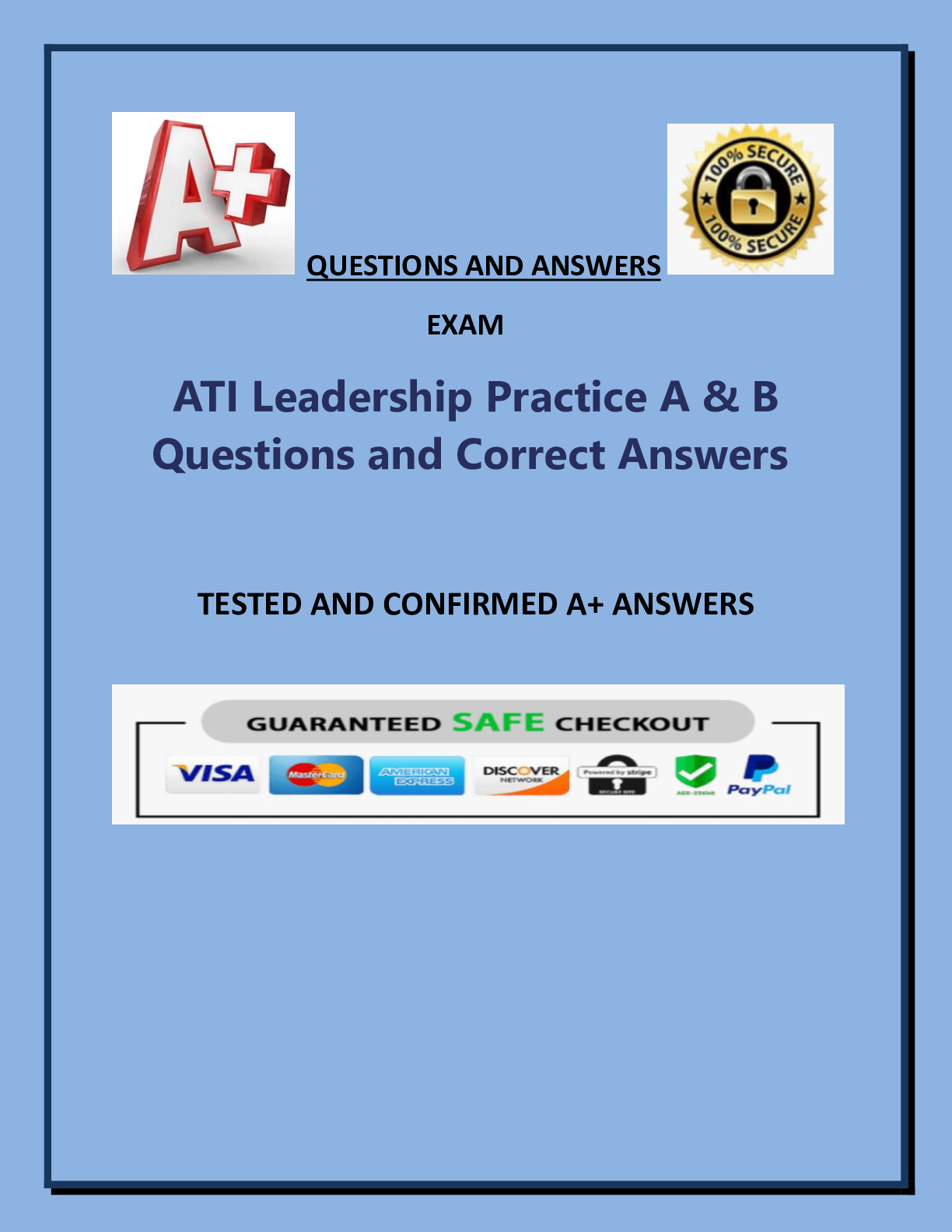Micro Biology > A-Level Question Paper > MICROBIOLOGY FINAL EXAM 2024 QUESTIONS AND CORRECT ANSWERS (All)
MICROBIOLOGY FINAL EXAM 2024 QUESTIONS AND CORRECT ANSWERS
Document Content and Description Below
A 5-month-old child is given honey at breakfast and begins showing symptoms consistent with botulism. Would the child's illness be classified as foodborne, infant or wound botulism? - CORRECT ANSWER... : Infant. Although food (honey) is consumed, foodborne botulism is derived from improperly canned, low acid foods under anaerobic conditions. Such conditions were not described. No puncture wounds or injuries were described, ruling out wound. The child is suffering from infant botulism, as honey is a potential carrier of clostridium. The intestinal track of young children is still developing and clostridium is able to colonize and produce the associated toxin. A facultative anaerobe is a microorganism capable of growth under what conditions? (short answer) - CORRECT ANSWER: A facultative anaerobe is capable of growth under aerobic (with oxygen) and anaerobic (without oxygen) conditions As Streptococcus is catalase negative would it thrive or die in the presence of peroxides? Why? (short answer) - CORRECT ANSWER: Streptococcus would not survive in the presence of peroxides—it is unable to breakdown peroxides (catalase negative). Left unchecked, peroxides would damage the cellular integrity of Strep causing lysis/cell death. Attachment - CORRECT ANSWER: Adhesin factors are used to bind to a particular host tissues Chlamydia symptoms if left untreated - CORRECT ANSWER: Infertility and pelvic inflammatory disease Define commensal bacteria (short answer) (know term and definition first) - CORRECT ANSWER: The bacterium neither harms nor benefits from the host from which it obtains nutrients Define the concept of universal precautions (short answer) - CORRECT ANSWER: Universal precautions means any and all samples, whether known or unknown, are to be treated as potentially hazardous (or pathogenic) materials Describe the symptoms and treatment regimen for someone infected with Clostridium pefringens (short answer) - CORRECT ANSWER: Clostridium perfringens presents with muscle necrosis, swelling of infected areas, fever, and intense gas production. Treatment entails removal of all infected tissue, often resulting in amputation of the affected areas, in conjunction with heavy antibiotic therpies [Show More]
Last updated: 1 year ago
Preview 1 out of 6 pages
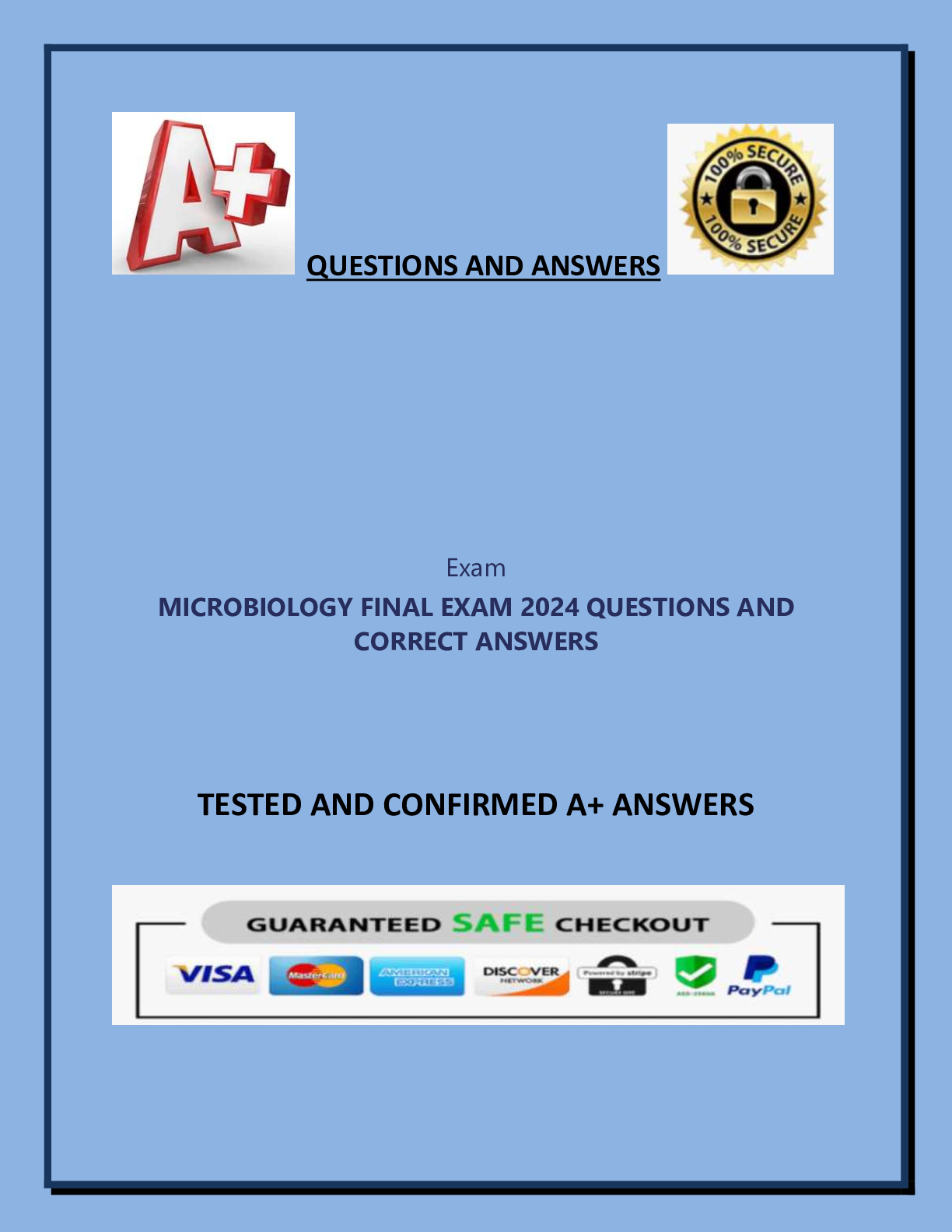
Buy this document to get the full access instantly
Instant Download Access after purchase
Buy NowInstant download
We Accept:

Reviews( 0 )
$16.00
Can't find what you want? Try our AI powered Search
Document information
Connected school, study & course
About the document
Uploaded On
Mar 26, 2024
Number of pages
6
Written in
Additional information
This document has been written for:
Uploaded
Mar 26, 2024
Downloads
0
Views
72

